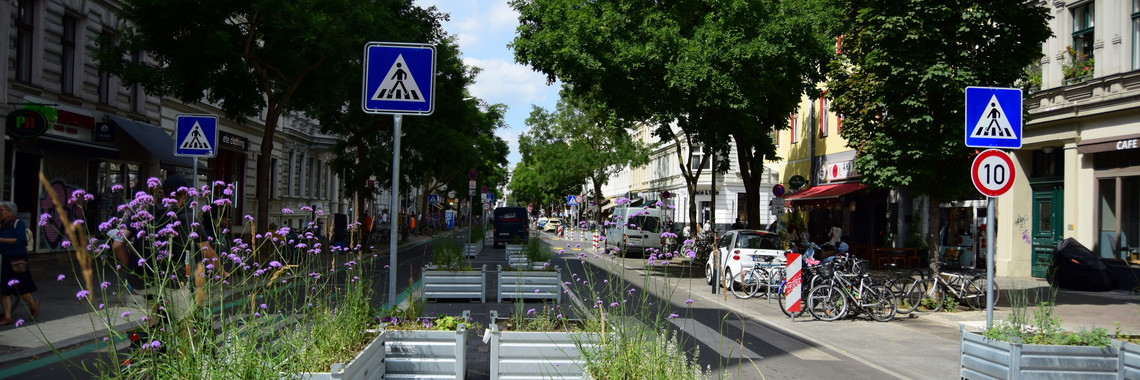The Bergmannkiez neighbourhood and in particular Bergmannstrasse are to be transformed into the car-free neighbourhood of the future. The project began in May 2021 with a ban on through traffic in the neighbourhood (exceptions: Friesenstrasse and Zossener Strasse) and a 20 km/h speed limit.
In June, the second phase of traffic calming on Bergmannstrasse, between Nostitzstrasse and Zossener Strasse started with the following measures: A protected two-way cycle lane, installation of green elements, reduction of the speed limit to 10 km/h, one-way street regulation, additional delivery areas and crossing areas for pedestrians.
In phase three, through traffic was also banned on Zossener Strasse and Friesenstrasse. In addition, a one-way street system was introduced, entrance areas to the Bergmannkiez were redesigned, and pedestrian zones were established at Chamissoplatz.
By June 2022, the District Office had launched an urban planning competition to invite tenders for a climate-resilient redesign of Bergmannstrasse.
Other measures taken in June 2022 to restructure traffic in the neighbourhood were not considered.
More information in our research report.
Results
- Motor vehicles
Especially in the section between Nostitzstrasse and Zossener Strasse, the number of vehicles dropped significantly by 77 per cent. The adjacent section of Bergmannstrasse to Mehringdamm also saw a daily reduction of 46 percent. - Bicycles
In the twelve months prior to the establishment of the protected two-way cycle lane on Bergmannstrasse, the number of cyclists recorded at number 97 averaged 3,200 daily. Following the implementation of the traffic calming measures and the introduction of the protected cycle lane, an average of 3,580 movements per day were recorded. This represents an increase of 11.9 percent compared to the previous period. - NO2
DUH has been measuring the air quality on the central Bergmannstrasse at the level of house numbers 4, 13 and 92 since September 2020. NO2 concentrations were measured about eight months before and eight months after the traffic calming measures. The pollution at all three measuring points decreased significantly. On average, NO2 levels dropped from 24 µg/m³ to 21 µg/m³. This corresponds to a reduction of 12.5 percent.

